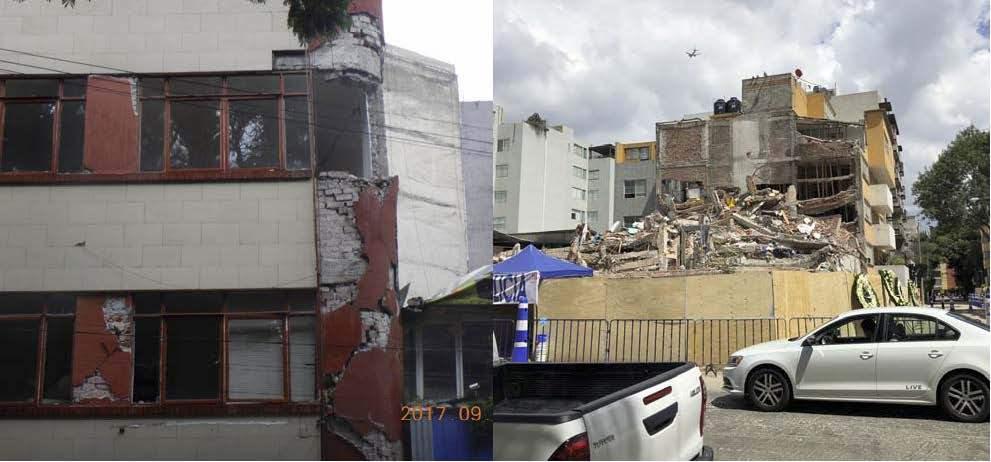Day 3 Mexico City: Col de Valle Central and La Condessa districts
Continuing our reconnaissance, Degenkolb visited the Col de Valle Central and La Condessa districts. As we have seen more buildings, we are starting to see some typical patterns in the damage and that building placement may affect the building performance. Similar to older houses in San Francisco, residential building in Mexico City are often built shoulder to shoulder to each other, with little or no gap. Although we think of pounding between buildings as being bad, there might be an unexpected benefit. Could one building prop up another and slow or stop the building from moving in an earthquake, even if it has a weakness like a soft story? When a building is located on a corner, Mexican buildings typically have solid walls on the back two side and storefronts along the two street sides, which would lead to unbalanced, twisting of the building in an earthquake. Could this be why many of the heavily damaged and collapsed buildings are located on the corner of the street? The photos here shows the damage to a corner buildings with the damaged concentrated on the open sides of the building.

